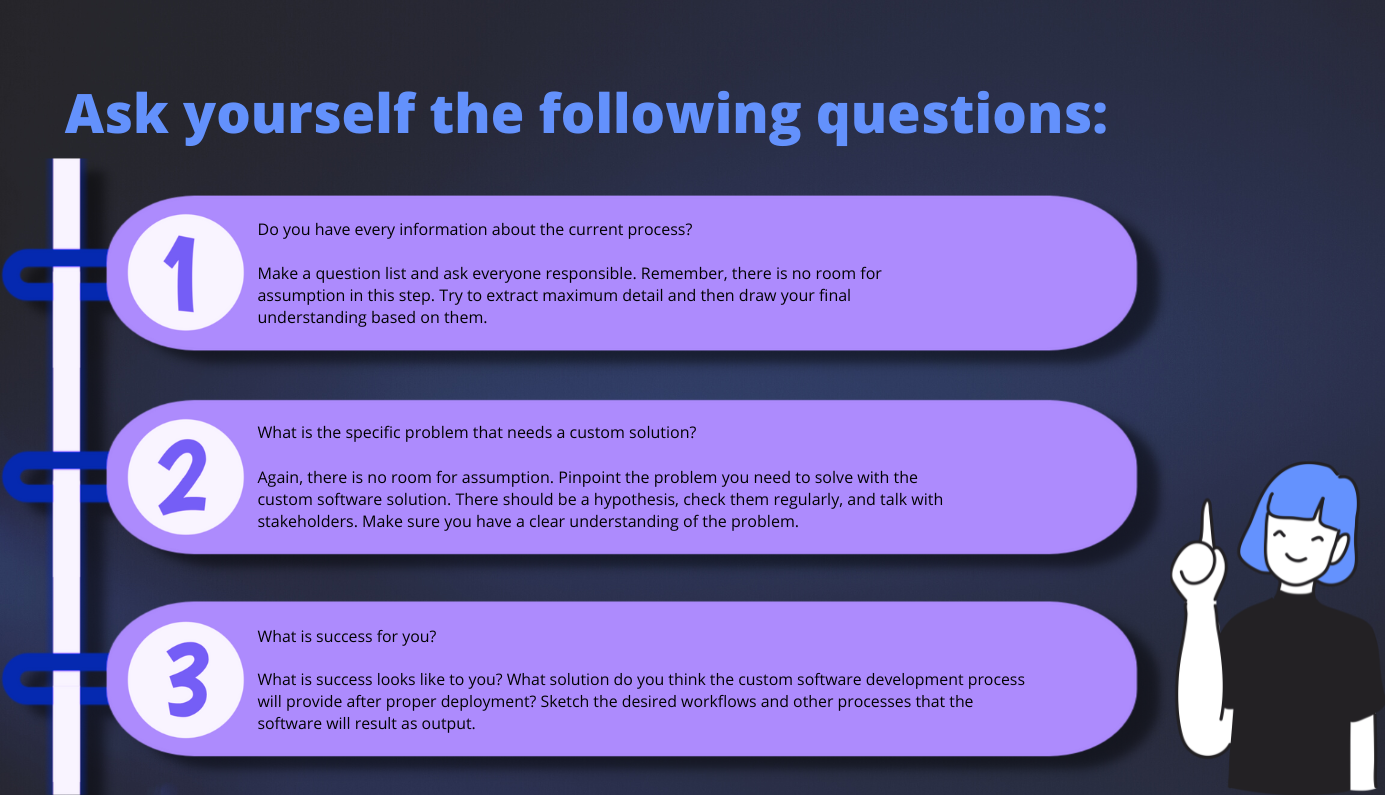Custom software development can be both exciting and daunting. It’s like venturing into uncharted territory with the promise of unlocking endless possibilities for your organization. However, to ensure a smooth and successful journey, it’s crucial to follow a strategic approach that encompasses not only the technical aspects but also the human and organizational factors. In this guide, we’ll explore the essential steps and best practices for developing custom software that perfectly aligns with your organization’s needs and goals. So, fasten your seatbelt, and let’s dive in!

Understanding the Organization’s Needs:
Before diving headfirst into the development process, it’s essential to take a step back and gain a thorough understanding of your organization’s current processes and future needs. Think of it as laying down the foundation for a sturdy building. Without a clear understanding of where you stand and where you want to go, you’re bound to encounter obstacles along the way. Documenting expectations and success criteria is like drawing up a blueprint for your software solution, ensuring that everyone is on the same page from the get-go.

Before building anything, it is crucial to building a process to meet the end goal. And to create a process, understanding the current one is the predominant factor. Apart from them, documenting the expectations and success criteria is a must.
Ask yourself the following questions:
Hiring the Dream Team:
Just like assembling the Avengers to save the world, assembling the right team is crucial for the success of your custom software project. Whether you choose to rely on your organization’s internal IT team, hire temporary technical experts, or enlist the help of a reputable software development vendor, make sure you have the right mix of skills and expertise.
After all, you wouldn’t want Hulk to handle delicate coding tasks or Iron Man to manage project timelines, would you?
Crafting a SMART Plan:
Now that you have assembled your exceptional team, it’s time to embark on the exciting journey of creating a roadmap that will lead you to triumphant success. Enter the project manager – the Tony Stark of your team, the visionary leader who will orchestrate the symphony of talent. Armed with a strategic SMART plan (Specific, Measurable, Achievable, Relevant, and Time-bound), and a well-structured Time and Action Plan (TNA), you will set the stage for a meticulously orchestrated development process. Think of it as charting the course for an epic quest, where milestones serve as checkpoints that guide you toward your ultimate destination.
It’s important to remember that Rome wasn’t built in a day, and creating great software is no different. The journey will require dedication, collaboration, and a steadfast commitment to excellence. Your project manager will be the compass guiding your team through the uncharted territories of development, ensuring that every step you take is aligned with the overarching vision and goals.
Remember that the true power lies in the collective efforts of your dream team. Foster a culture of open communication, collaboration, and mutual support. Empower your team members to contribute their unique talents and perspectives, as diversity is the fuel that powers innovation.
Testing, Testing, 1-2-3:
Ah, the often-overlooked yet critically important phase of software development – testing. Imagine building a rocket without testing its engines; disaster waiting to happen, right? Similarly, rushing into software deployment without thorough testing can spell doom for your project. Technical testing ensures that the gears and cogs of your software are in perfect sync, while user testing puts your creation in the hands of real-life heroes – your beta users. Their feedback is like the North Star guiding you toward software nirvana.
Documenting the Journey:
As the saying goes, “If it isn’t documented, it didn’t happen.” Documenting the entire custom software development process is like creating a treasure map for future adventurers. From checklists and test plans to scope statements and implementation guides, every step of the journey deserves its place in the annals of your organization’s history. And let’s not forget about training – the Gandalf to your Frodo, guiding your team through the intricacies of the new software realm.
Wrapping Up:
Congratulations, brave adventurer!
You’ve successfully navigated the treacherous waters of custom software development and emerged victorious on the other side. Armed with a deeper understanding of your organization’s needs, a dream team of skilled professionals, a SMART plan, rigorous testing, and meticulous documentation, you’re ready to conquer any challenge that comes your way. So go forth, unleash the power of custom software, and write the next chapter in your organization’s epic saga.





